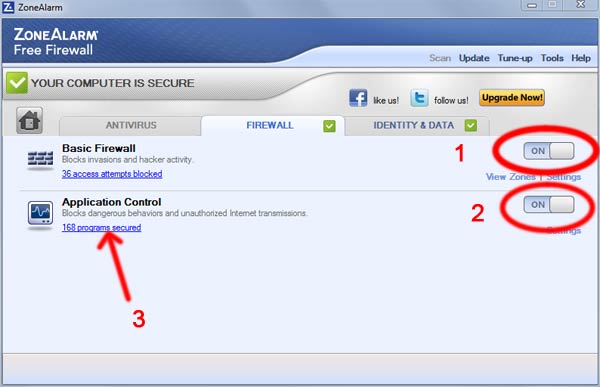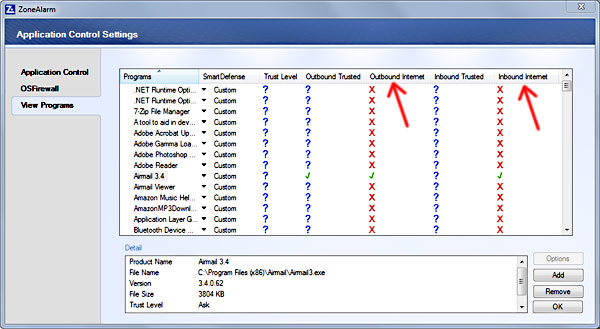Exterminating Sat Phone Minute Leeches
We bought an Iridium Satellite phone before our trip up to Fiji in 2013. We bought it just after the price of air-time went from ridiculous to astronomical (pun intended – Satellites, get it?). I was very disappointed when the simple task of picking up a small grib file (weather file) took four or five minutes (in other words, $8 or $10 US). I’m a techie guy. I know how long a connection like that should take – well under a minute.
It seems that many of the programs on my computer saw the sat phone connection as their great chance to phone home for whatever scrupulous or nefarious purpose they had in mind. I turned off all the program update services I could find: Java, Quicktime, Adobe Acrobat, Nvidia, Logitech, Microsoft, .Net, C++, Visual Studio, SQL, ABC, XYZ and many more.
Feeling good about the work I’d done, I connected again. I selected the status window for the satellite connection and watched the bytes churn away even though I had not sent nor asked for any data. I wasn’t really expecting complete success as so much of today’s software insists on phoning home at every chance and doesn’t give you much or any control over this nuisance behavior, but all that I’d done made very little difference.
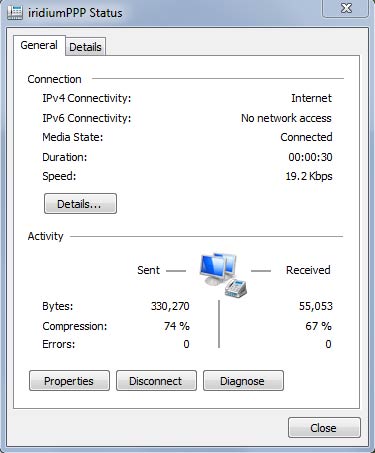
This meant war! I’m not usually a big fan of firewalls. Often, they keep the good stuff from working and don’t even slow down the bad stuff. You have to be so careful with firewalls like McCafee and Symantec – these are often worse than the virus’ the are supposed to stop. Years ago, I used a nice little one called ZoneAlarm and there’s still a simple, free version available. That’s the ticket.
I downloaded and installed ZoneAlarm (download here) and found its interface had changed a bunch. It was a bit of a learning curve to figure out how to control internet access of the programs on my computer. Here are some instructions showing how I set it up and use it. I’m using ZoneAlarm Free Firewall version 11.0.780 on Windows 7 for these examples.
After you install it, it runs in the background and you may not see much trace of it. If it isn’t readily visible, you can find it by clicking on the “Show hidden icons” button as in the screenshot below.
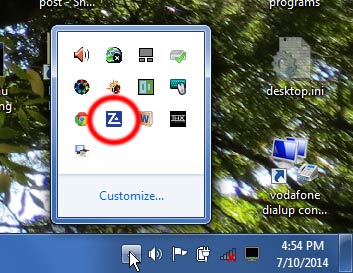
Configuring Zone Alarm
There are settings we needed to change to make this program work for us. First, we set it so that it doesn’t run when your computer starts. I only want it to run when I tell it to run.
Click the icon and run the program…
Don’t run at startup: Select Tools/Preferences from the menu near the top on the right side and uncheck the “Load ZoneAlarm Free Firewall at startup” check box, then click OK.
Set up Programs: There are three blocks on the main ZoneAlarm screen. Click View Details on the “Firewall Protected” Block.
Make sure that both Basic Firewall and Application Control are turned on with the sliders on the right – see 1 and 2 in the screenshot below.
Now comes the tedious part… setting internet access for individual programs. Click on the link under Application Control (3 in the screenshot above). Yours will have a different number of programs listed. You’ll get a screen like the one below. (I drug my window below so that it was wide enough to display all the horizontal information at once.)
For each program listed, right or left click on any question marks or green check marks in the Outbound Internet and Inbound Internet columns and select Deny in the menu that pops up (see screenshot below). Important: For the program you use with your sat phone to get gribs or send and receive email, set both inbound internet and outbound internet to Allow (as Airmail 3.4 is set in the above example). When you’re done, click OK.
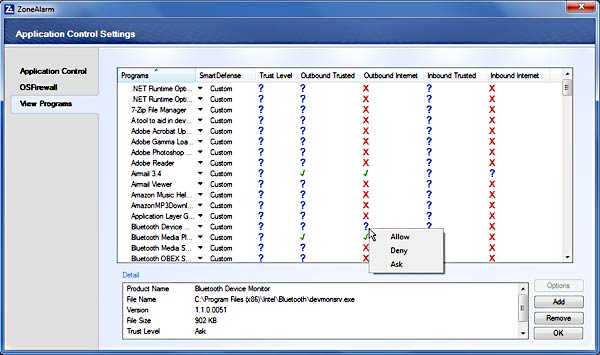
Using ZoneAlarm
We put the ZoneAlarm icon right next to Airmail which we use for getting gribs – saildocs – and sending and receiving email. That way, I’m more likely to remember to run it before starting Airmail. When you run the program, you may not see anything. You can check the “Show hidden icons” at the bottom right of your screen and you should see the ZoneAlarm icon there if it’s running.
To quit ZoneAlarm, you’ll also need to find that icon, right click it and select “Exit” from the pop-up menu. It’ll give you the “Are you sure…” thing. “Yea, I’m sure. I wouldn’t have done it if I wasn’t!” OK, since that isn’t an option, click yes or OK or some such.
You’ll get pop-up windows from time to time while running ZoneAlarm asking if this or that program can do this or that. I always say no unless it’s the program I’m using with the sat phone. I get tired of clicking no for the Google Chrome Crash Handler messages so now I just ignore them and leave them on the screen. If you say yes to those, they change the settings in ZoneAlarm so that the crash handler can eat your sat minutes. (Shame on you Google – it does this even when Chrome isn’t running, but Google, I still love you.)
There are probably many different firewall programs that will accomplish the same thing. You need to be able to block all programs from accessing the internet while allowing the one you use to connect via sat phone. We’ve been using ZoneAlarm for this for about a year now and it works well. I’m sure we’ve saved well over $500 so far in sat phone minutes. We hope it works for you. (Sorry Mac people, I don’t know enough to be much help when it comes to Macs.) -Rich

